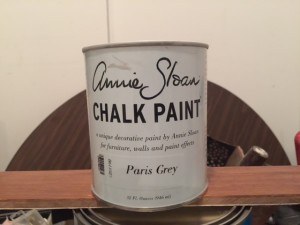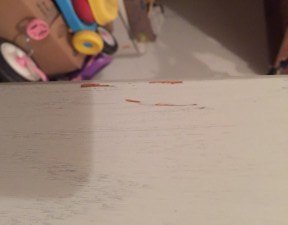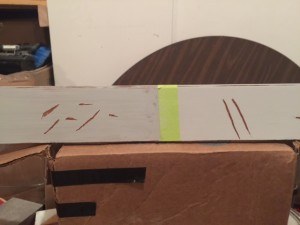Chalk paint has become very popular recently. It was created by an English painter named Annie Sloan in 1990.
Chalk paint is not chalkboard paint or paint with chalk added to it. What exactly is in it is a mystery to some extent. I could not obtain a data sheet on the product and, of course, an msds tells you very little about what’s in it. A quart has some weight to it so the solids content is high. What those solids are is anyone’s guess.
There are a lot of claims about chalk paint. Some true and some false. There are different manufacturers out there so I decided to test the original product; Annie Sloan’s paint.

It has a beautiful matte finish and the choice of colors is nice. Unlike traditional paint, the different colors are obtained by mixing paint from the colors available. This is an interesting approach to developing a color. You can change the color without changing the consistency as you would by adding tint or pigment. I imagine you could change the color in the more traditional way (by adding tint) if you chose to do so. Here is an interesting site that offers a neat program to see how the various colors will look when you mix them together. http://www.therestoredhome.com/blend-colors
I have worked with chalk paint before. It was on a piece of painted furniture. It worked well and was easy to use.
This time around I decided to test some of the more extreme assertions. There are lots of “crazy” claims out there concerning chalk paint. That it will stick to glass, laminate, plastic, metal, floors….. That you will rarely, if ever, need to sand or prime. It sounds like a miracle product. I don’t think you have to be a paint contractor to know how difficult it is for a paint to adhere to glass or laminate.
I will start by saying that I wanted the claims to be true, but sadly they were not. I did not test the product on all the various substrates but I did on two. A stained and lacquered door and a piece of laminate. The lacquered door was lightly sanded and I brushed on one coat of chalk paint. After 24 hours the paint could be fingernailed off. Very weak adhesion. When trying to brush or roll some urethane on the door it would lift the chalk paint. The door was sprayed with 2 coats of lacquer and you could still fingernail off the paint.

Next was the laminate. It had no prep work other than cleaning it. It got one coat of chalk paint and the results were the same. On one side of the picture the paint was sealed with wax. On the other lacquer. The results were the same.

So what would work? Well, the doors were part of a project for a customer, so we achieved the results she was looking for by mixing Break-Through (a Pittsburg Paint product) with about 20% floetrol to make it more manageable. We lightly sanded the doors and rolled them followed by back brushing with the grain. We then sprayed 2 coats of clear satin Break-Through. Great adhesion, great results!
I would recommend chalk paint for the neat effects and unique colors. You can achieve nice results with the product; however, you should keep in mind that this is not some miracle product that will stick to anything. Good results require good prep!

